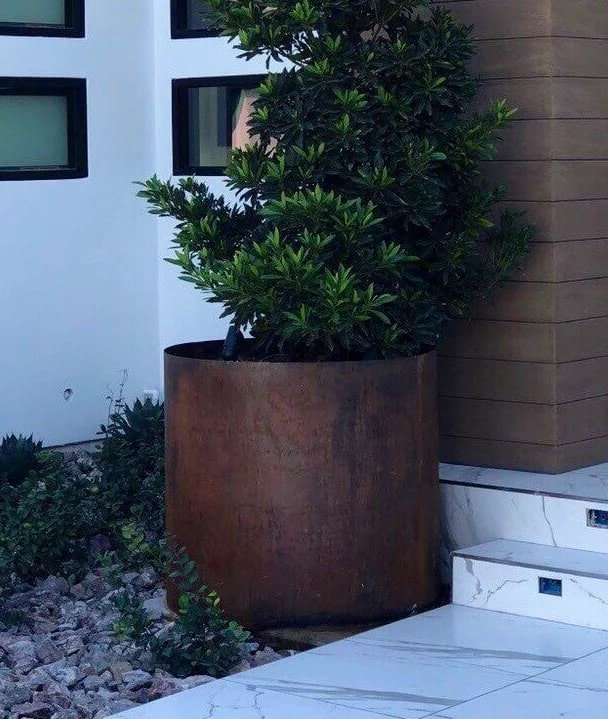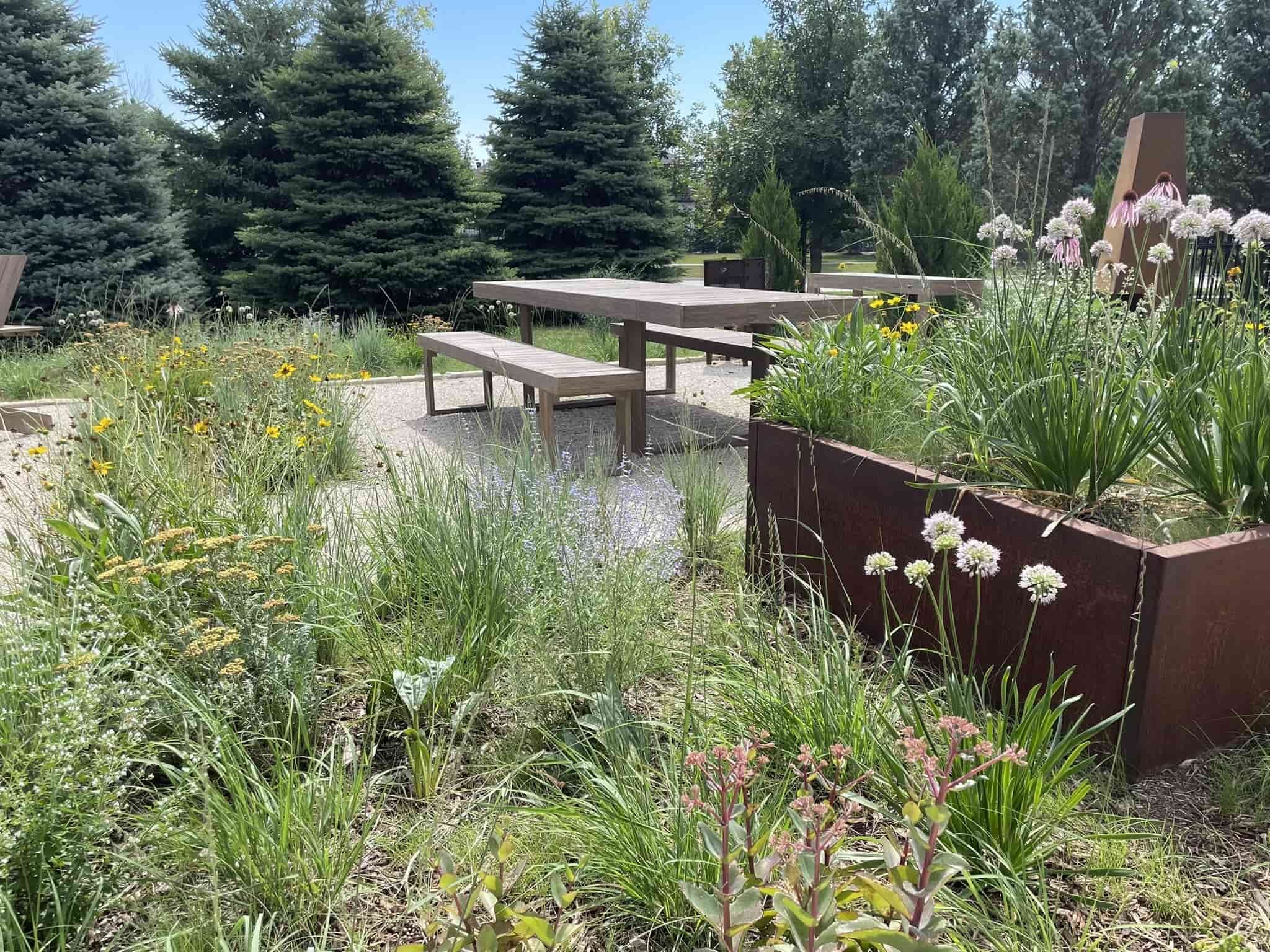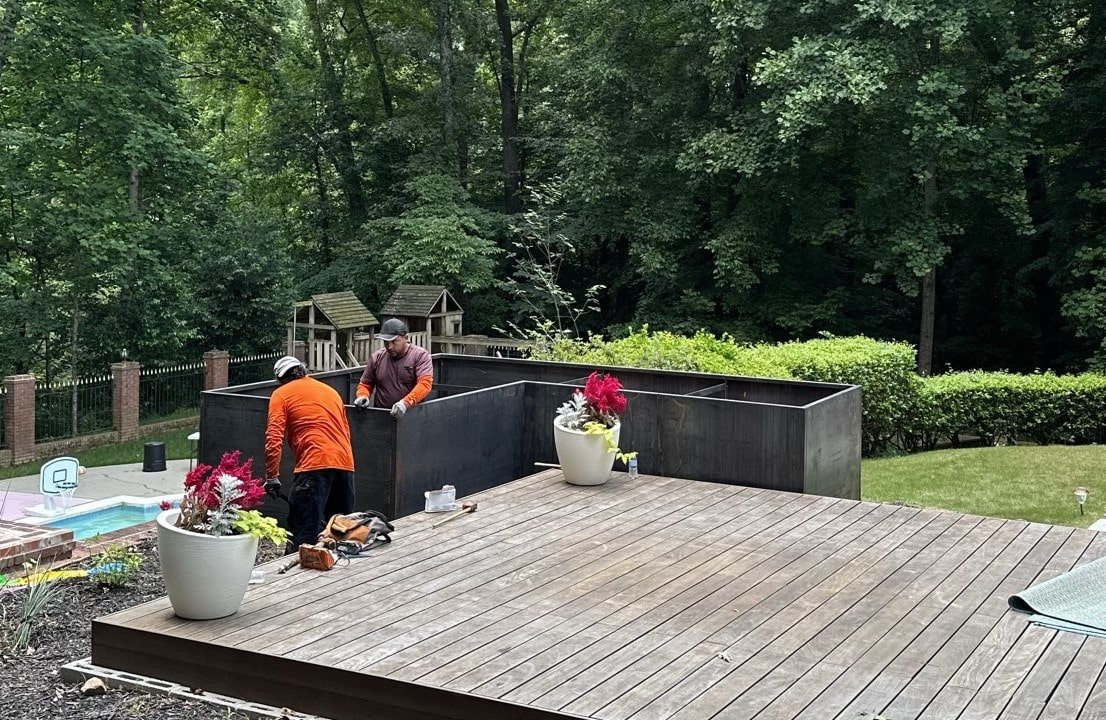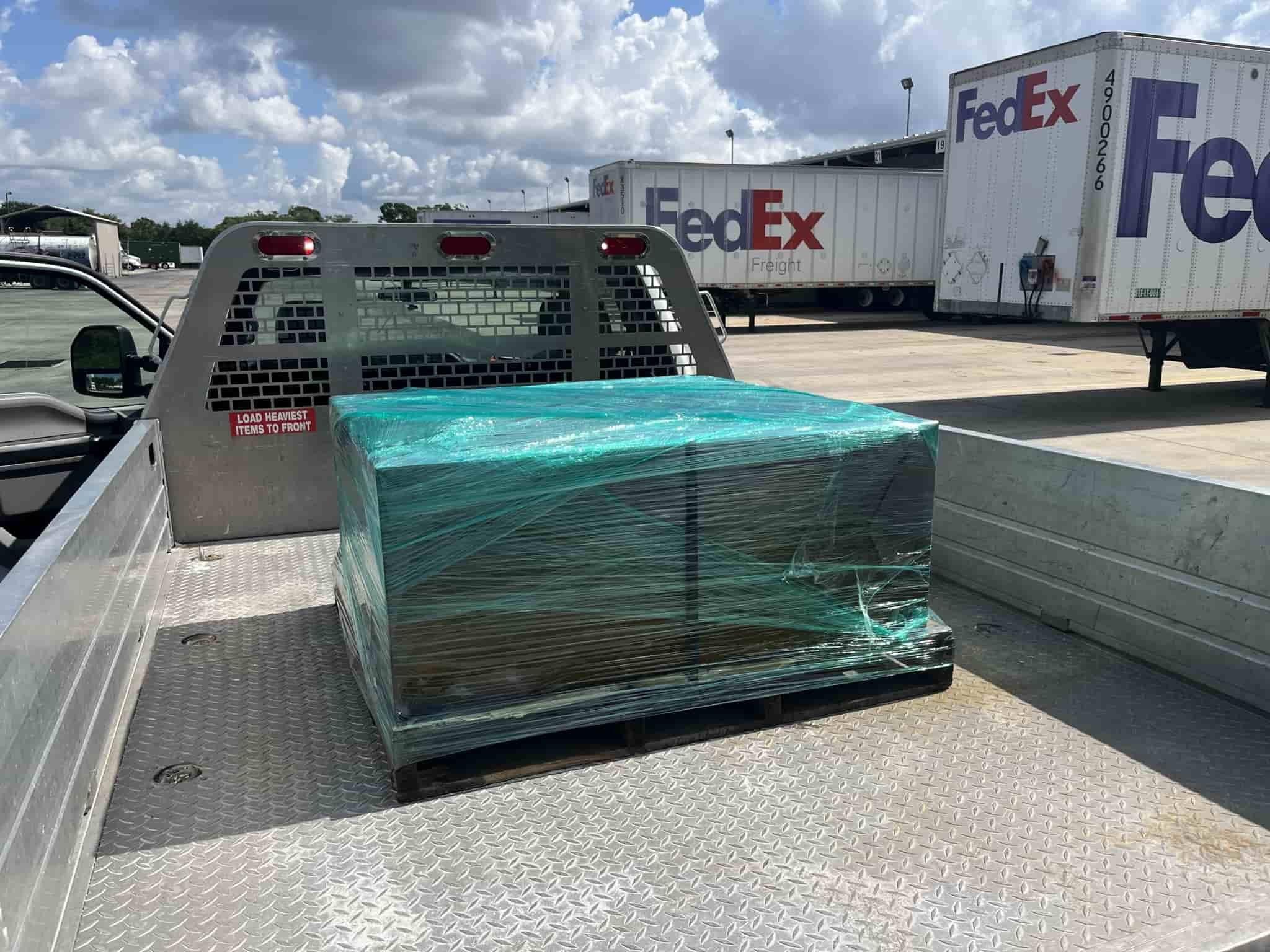4 Different Types of Planters (2023 Gardening Guide)
As an industrial designer, I always search for unique planters for my clients’ designs. Planters are like the jewelry of outdoor spaces -— they can take a simple garden or patio and make it shine. Over the years, I’ve discovered and worked on so many different types of planters in all shapes, sizes, materials, and styles. I thought I’d share some of my favorites and tips for using each kind.
Whether you’re a landscape pro looking for an innovative new design or a homeowner wanting to spruce up your outdoor area, this guide covers all the different types of planters to suit your needs. From sleek and modern metal planters to ornate stone urns and DIY wooden crates, I’ll give you the scoop on my top choices and how to incorporate them into your space. Let’s get inspired!
4 Different Types of Planters
Here are four different types of planters and their main selling points that you need to be aware of before purchasing or making your own planter.
#1. Raised Planters: Elevated Designs for Optimal Growth
As a product and industrial designer, I’m always looking for different types of planters that look great and provide optimal growing conditions for plants. Raised planters are one of my favorites for several reasons:
Raised planters or beds elevate plants above ground level, making them more visible and easier to reach. I find waist-high planters ideal for gardening without straining my back. Elevated planters can make gardening possible and enjoyable for clients with mobility issues.
The soil in raised beds warms up faster in spring, allowing you to plant earlier. The soil also drains better and requires less watering. I often fill raised planters with a mixture of compost, perlite, and potting soil to provide the perfect environment for plants to become established and flourish.
All our planters are custom designed, meaning we can turn your dream planter into a raised planter if needed
You have more control over the growing medium in a raised planter. If you have contaminated or compacted soil, a raised bed allows you to bypass that and start fresh with clean, nutrient-rich soil. You can also tailor the soil to meet the needs of specific plants.
With many styles of raised planters available, from corten steel to wooden boxes and stone containers, you’ll find ones that complement your home’s architecture and landscape design. For a cohesive look, I choose planters made from natural-looking materials that blend with surrounding hardscape elements.
In my experience, the benefits of raised planters are well worth the investment for any gardening enthusiast or landscape professional. Have you considered adding raised planters to your next design project? Your plants and clients will thank you — contact me today to discuss your project details.
#2. Container Planters: Versatile Options for Small Spaces
For someone who lives in a small space, container planters are the ideal types of planters for plants — great for adding greenery without sacrificing square footage. These versatile planters let you enjoy the benefits of gardening, even with limited room.
Container planters come in all shapes, sizes, materials, and price points, and here are my favorites alongside where they work best:
Plastic or resin planters for budget-friendly options. They’re lightweight but durable and come in a variety of colors.
Corten steel planters for a rustic, natural look. Though more expensive, they last for years and hold moisture better, which gives you more value for your money when compared to other types.
Self-watering planters with built-in reservoirs are perfect for frequent travelers. They automatically water for up to 2–4 weeks.
Railing planters that attach to balconies or patios so you can garden even without a yard.
Hanging planters for trailing plants like ivy or petunias. They save space and create dramatic height.
With the range of choices, you can find planters to match any style. And since they’re moveable, you can rearrange your mini garden whenever you want a new look.
Container planters let anyone flex their green thumb and enjoy gardening, regardless of setting or season. For small space dwellers, they’re ideal for adding life to porches, patios, and balconies without sacrificing style or mobility. Any space is an opportunity to create an oasis!
#3. Window Box Planters: Bringing the Outdoors In
As a product designer, I always look for unique ways to seamlessly blend indoor and outdoor spaces. Window box planters are a simple way to bring greenery inside.
When designing window boxes, I consider the architecture and period of the building. For modern spaces, sleek and rustic corten steel planters in geometric shapes work well. The planters should enhance the facade, not detract from it.
To install the window boxes, I first ensure the planter size is proportional to the window size. Oversized planters can look top-heavy and overwhelm the facade. I then securely attach the planters to prevent tipping, using brackets that mount to the sill or wall.
Window boxes are an easy way to boost curb appeal and bring life to a building. The suitable planters and plant selection tailored to the architecture and window conditions make a charming addition to any home or commercial space. Window boxes may seem like small details, but they can significantly impact aesthetics. As with any good design, it’s all in the details.
#4. Trough Planters: Rustic Elegance for Your Garden
These types of planters are long, narrow, and have a rustic yet refined look that works well in traditional and contemporary garden designs.
Used initially as livestock feeders, stone troughs have been repurposed as sturdy and eye-catching planters. They come in various natural stone materials like granite, sandstone, and limestone. The aged, weathered look of the stone helps trough planters blend seamlessly into garden environments. Their simple yet sculptural form is ideal for showcasing foliage and flowers.
Trough planters can be used individually or grouped to create dramatic displays. I like using them to line pathways and stairs, or as partitions to define separate garden areas. They’re also perfect for displaying cascading plants, like petunias, verbena, and sweet potato vines. Moreover, the stone helps keep the soil cool, even in hot weather.
While stone trough planters may require some investment upfront, their durability means they’ll last for decades with minimal maintenance. The natural stone tends to develop a patina over time, adding to its rustic appeal. For most projects, trough planters from 2 to 6 feet long suit a range of needs.
If weight or budget is a concern, faux stone alternatives like concrete or resin trough planters offer a lighter, more affordable option with a similar aesthetic. They provide an easy way to get the trough look without the trough bulk or price tag.
Overall, if I’m not using corten steel, trough planters are my next choice to add a touch of rustic elegance to a garden space. Their natural, weathered style and sculptural form help create an oasis of tranquility. For me, they achieve the perfect balance of form and function — second only to corten steels.
Exploring the Beauty of Custom Corten Steel Planters
As a product designer, my favorite types of planters for plants are made from corten steel. It has a beautiful rusty, weathered look that provides an industrial edge to outdoor spaces. I often use it to create custom planters for clients.
Designing Different Types of Planters with CAD
To design corten steel planters, I use parametric computer-aided design (CAD) software to create 3D models that clients can view before commencing fabrication. This helps ensure the planter will look perfect in their desired location and fit their specific needs. The CAD designs provide exact measurements for cutting and welding the steel sheets.
The above planter was custom designed to our customer’s needs using CAD
Durability and Longevity
Corten steel is ideal for planters because it’s highly durable and weather-resistant. Once exposed to weathering elements, it develops a stable rust-like appearance that protects the metal underneath. Corten steel planters can last a lifetime with minimal maintenance required — they don’t need to be painted or stained.
Custom Sizes and Shapes
I can design corten steel planters in various shapes—square, round, rectangular, curved, tapered—and sizes to suit any space.
We’ll design and fabricate your ideal planter, and deliver it direct to your home our landscape project.
A planter 2 to 3 feet high and 3 to 4 feet wide for smaller yards or patios works well. I’ve equally designed planters up to 6 to 8 feet high and 10 to 15 feet long for commercial properties or large residential lots. The possibilities are endless — see my corten steel planter gallery for a pictorial representation.
***
Corten steel planters create a bold, dramatic statement wherever they’re placed. Their rusty textures and ability to withstand weathering elements make them a premium choice for landscape design. Working with this material and crafting custom planters for clients is extremely rewarding — the final installations become enduring focal points appreciated for years to come.
Where to Buy Different Types of Planters
When it comes to finding different types of planters, you should have a unique place where you can always find what suits your taste. As an industrial designer, I always want my clients to have easy access to the best corten steel planters on the market.
By “the best,” I mean planters guaranteed to last for decades at the best price you can get them. That’s why I have my Etsy Shop — it’s a place where you can shop for custom corten steel and aluminum planters, planter beds, architectural elements, and metal sculpture. I made them myself, so if you have any special requirements, feel free to contact me to discuss them in more detail.
Frequently Asked Questions
What is the most common type of planter?
The most common type of planter is typically made of plastic or clay. However, there are various materials that are more durable, including corten steel and metallic options, which offer durability and aesthetic appeal. These materials, such as corten steel, are known for their weather-resistant properties, making them suitable for outdoor use. Custom-made planters crafted from corten steel or metallic materials can add a unique and stylish touch to any garden or outdoor space.
What type of planter is best for plants?
The type of planter that’s best for plants depends on several factors, including the specific needs of the plants and the environment they will be placed in. Generally, planters with good drainage and sufficient space for root growth are considered ideal. This allows for proper airflow and prevents waterlogged soil, which can lead to root rot.
Additionally, materials like terracotta or ceramic can provide insulation and regulate moisture levels. However, it’s important to consider the specific requirements of the plants you intend to grow when choosing the best type of planter.
What type of planter lasts the longest?
Corten steel planters are known to last the longest among different types of planters. Due to their exceptional durability and resistance to corrosion, corten steel planters can withstand various weather conditions and maintain their structural integrity over time. The natural weathering process of corten steel forms a protective layer, preventing further corrosion and extending the lifespan of the planters. Therefore, if longevity is a priority, corten steel planters are an excellent choice.
What planters won’t crack in winter?
Planters made of materials such as fiberglass, concrete, or corten steel are less likely to crack in winter compared to planters made of clay or terracotta. These materials have better resistance to the expansion and contraction caused by freezing and thawing temperatures.
Fiberglass is lightweight, durable, and doesn’t crack easily, while concrete planters are known for their strength and ability to withstand freezing temperatures. Corten steel, known for its weather-resistant properties, can also withstand winter conditions without cracking. When choosing planters for winter use, selecting these materials can help ensure they remain intact and unaffected by temperature changes.
Conclusion
After exploring the different types of planters available, I hope you’ve found some inspiration and ideas for your next landscaping project. Whether you’re looking to add greenery to a small patio, create an urban oasis, or design a massive corporate atrium, the options are endless.







